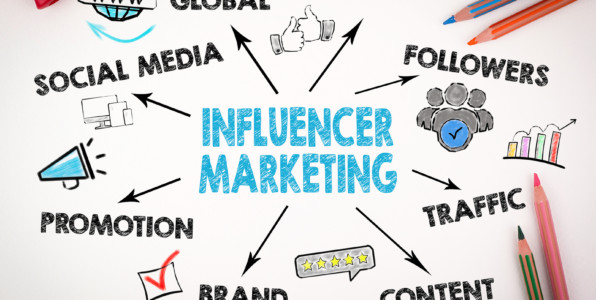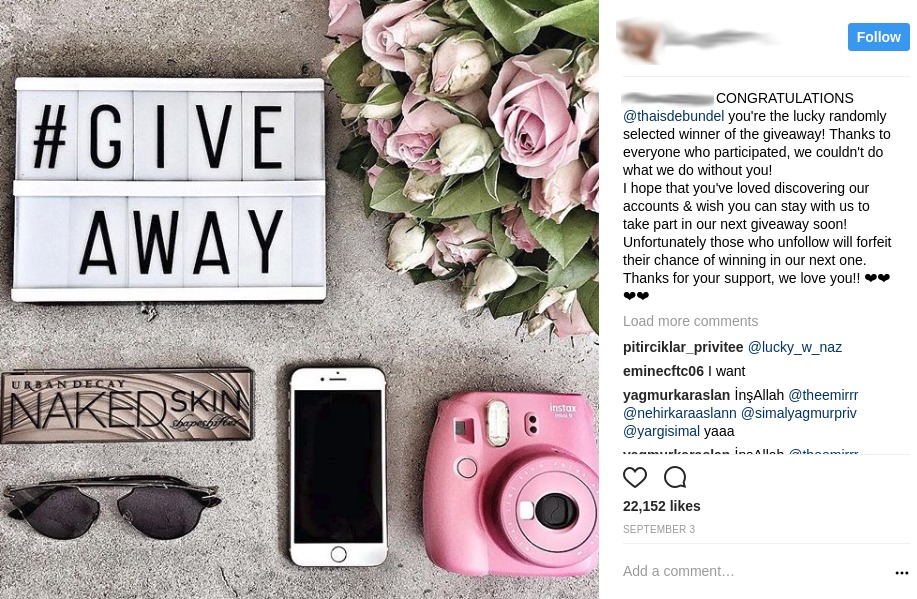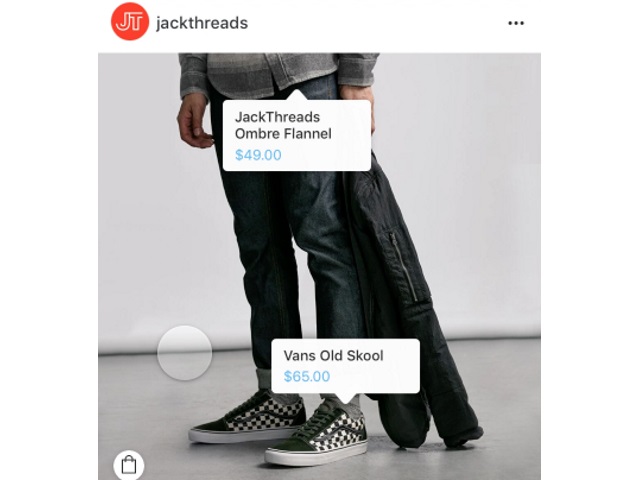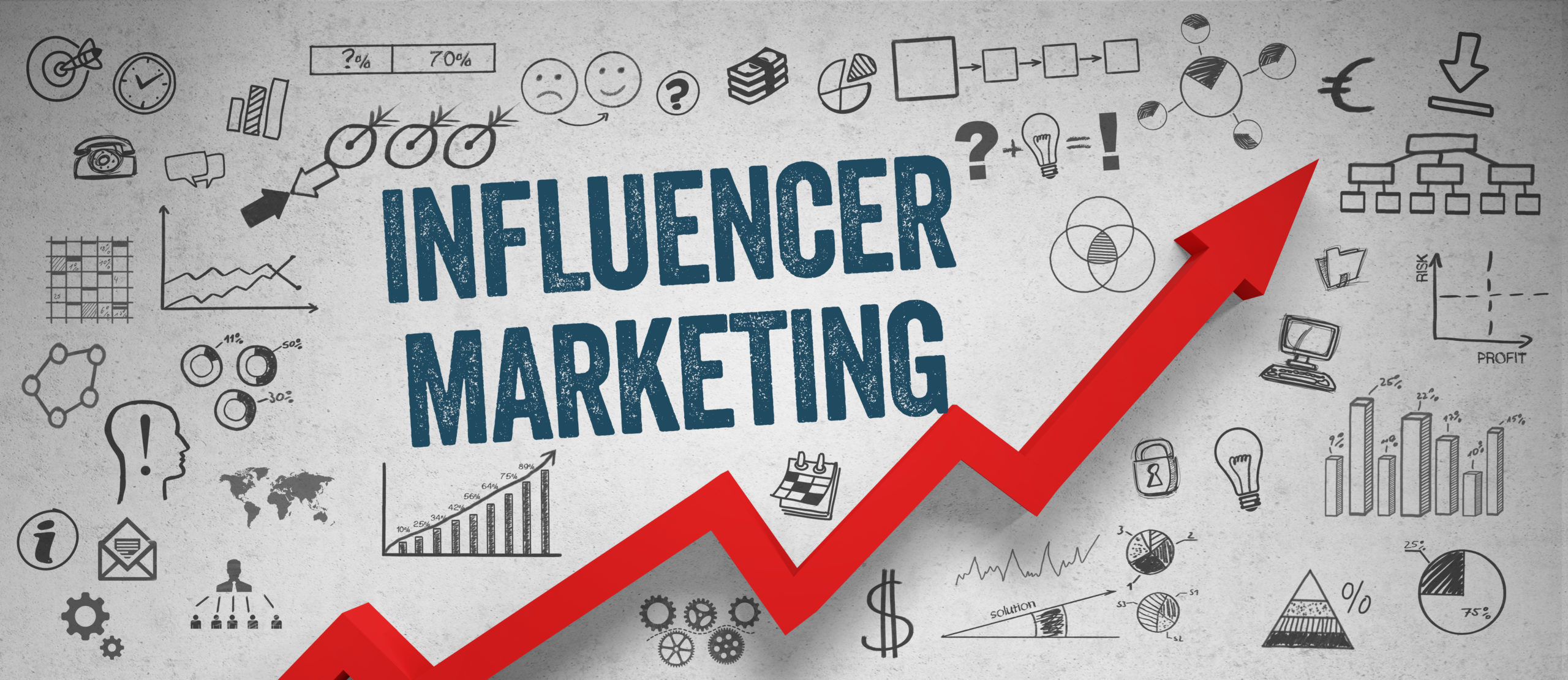Today’s customers are more knowledgeable than ever. They read reviews and check competitors’ features and pricing. All the information they need to make informed buying decisions is at their fingertips.
Consequently, today’s customers are less easily swayed by traditional marketing methods and more compelled by word-of-mouth recommendations. They value transparency and want to do business with companies they trust.
Influencer marketing is a strategy that can help customers perceive your business as trustworthy so you can generate more leads and build better relationships as a result.
Below, you’ll dive headfirst into all things influencer marketing, starting with what it is and how it can benefit your ecommerce business.
What Is Influencer Marketing?
Influencer marketing gets authoritative people in a business’ industry, known as influencers, to promote the company and its offerings on social media and other platforms.

Sponsored ads can be annoying. Their messages can feel overly salesy and inauthentic. And many people use ad-blocking technologies to prevent advertisements from interrupting their online browsing experiences.
Influencer marketing, on the other hand, involves a real person—an influencer—whom a business’ target audience follows and trusts. Influencers are people who’ve established sizeable followings and credibility in their industry based on the content they create. They can be bloggers, social media stars (especially YouTube and Instagram), social activists, or niche experts.
Influencers share content that’s engaging and authentic and they typically similar values and interests with their followers. This means that when an influencer promotes a business or a company’s offer, customers are more likely to listen and perceive the message as honest and reliable, not salesy or bothersome.
How Influencer Marketing Benefits Your Business
Most businesses are familiar with the effectiveness of using celebrity endorsements to boost awareness, traffic, sales, and conversions.
For example, cosmetic and perfume brands often feature well-known actresses in their advertisements to convey the products’ quality and desirability. After all, if someone like Julia Roberts endorses a product line, it’s got to be good, right?

Consumers find celebrity endorsements more persuasive than other marketing strategies. And as a result, they have better recall and recognition for those products and brands.
Smaller companies don’t likely have the budget to recruit Hollywood A-listers for celebrity endorsements, however. But influencer marketing can produce similar results, just on a smaller scale and with a smaller budget.
Plus, even though influencers don’t have the same reach as celebrities, influencers’ audiences are usually more targeted, which benefits smaller ecommerce businesses by enabling them to build stronger connections with customers.
In sum, influencer marketing can benefit your ecommerce store in the following ways:
- Enhance brand awareness and loyalty
- Increase traffic
- Generate targeted leads
- Boost conversions (e.g. earning more social media fans and social proof, gaining more newsletter subscribers, and, of course, getting more sales)
How To Find The Best Influencers To Promote Your Business
In order for influencer marketing to work, you have to find the right influencers for your brand or offer. Here are two ways you can do that:
1. Look At Your Existing Followers
This is the easiest strategy to find relevant influencers willing to promote your business. Influencers who follow you take less convincing because they already know who you are and like what you have to offer. They might even share your content or mention you in their posts already.
2. Use An Influencer Database Or Marketplace
If you can’t find any influencers among your existing followers, there are several tools you can use to find, connect with, and manage relevant influencers. Here’s a list:
- Peg
- Famebit
- NeoReach
- Reachbird
- UnityInfluence
- BuzzSumo
- Upfluence
- AspireIQ
- iFluenz
- Fourstarzz Media
- TapInfluence
As you search for influencers, you’ll notice that the cost of influencer marketing varies significantly, depending on the influencer’s experience, skill, and reach. To find the best fit and get the most out of your investment, keep the following tips in mind:
Find influencers who match your brand’s tone and mission.
You don’t want influencers who post promotional content that’s generic or half-hearted. For example, you wouldn’t want an influencer to take a photo with your product and say something bland and nonspecific like, “Check this out!” or “Buy this now!”
You want influencers who post meaningful, engaging content that aligns with your company’s style and values.
Look for influencers who are popular in the right niches and on the right platforms.
Where does your audience hang out? What platforms (social media, blogs, etc.) do they use? Pick influencers who are popular on the platforms your audience frequents.
You also want influencers who operate in your industry or niche. Look for influencers who post about offers related to what you sell and who partner with other brands or businesses that might also like what you offer.
Tune into hashtags.
Pay attention to the hashtags your audience uses. Then, look for influencers who include the same or similar hashtags in their content.
Watch out for influencers who post mostly sponsored content.
Influencers who don’t post much original content typically have lower engagement rates, which won’t bode well for your influencer marketing campaign. Try to find influencers who post a mix of personal content (e.g. opinions, views, musings, etc.) and paid content. That way, they’re more likely to have an audience that pays attention to their posts.
Pay attention to influencers’ ratio of followers to engagement.
If influencers have lots of followers but their content doesn’t get many likes or comments, that’s a sign they may not be effective at promoting your business.
For example, if an influencer has 500K followers but each of his or her posts get only 20-30 likes and a handfull of comments, that influencer doesn’t have good engagement and probably won’t be the best fit for your business.
The Do’s and Don’ts Of Working With Influencers
After hiring an influencer you think works well with your brand, there are a few things you should and shouldn’t do to create an effective working relationship.
Do…
- Compensate your influencers fairly. They are providing a service and should be paid for their time and effort.
- Agree on terms upfront. Influencer marketing should be a win-win situation. Discuss expectations and concerns before getting started to make sure everyone is on the same page.
- Let your influencers be themselves. Encourage them to flex their creativity muscles. Their authenticity is why their audiences love them.
- Provide information about your brand and general guidelines about the message you want influencers to convey. You can also outline the main points you want to be mentioned in the content.
Don’t…
- Don’t write a script. You can give influencers an overview of what to talk about, but influencers should use their own words; their messages should be honest and genuine.
- Don’t tell influencers to talk too much about a specific product, its features, or its unique selling proposition (again, influencers should be honest and genuine and they should focus on your offer’s value).
- Don’t limit the number of photos or the running time of videos that influencers post. Again, let influencers be creative and be themselves.
How To Create A Winning Influencer Marketing Strategy
Influencer marketing is more than just getting popular online personalities to sell your products and promote your business. Influencer marketing combines testimonials and word-of-mouth marketing in a way that encourages storytelling, transparency, and engagement. It shifts the focus from selling and strives to establish honest connections and authenticity.
Here are the steps involved with creating an effective influencer marketing campaign:
1. Set Your Campaign’s Goals
Your campaign needs a goal. Without a goal, you’re shooting in the dark and won’t be able to track your campaign’s performance as efficiently. When you know what you want to accomplish, you’re better equipped to create a strategic plan that works with your influencer’s strengths.
Here’s a list of common influencer marketing campaign objectives:
- Enhance brand awareness
- Expand your audience
- Increase engagement
- Generate more leads
- Boost sales
- Build links
- Encourage customer loyalty
After establishing your campaign’s goals, keep in mind that the influencer you select has likely worked with similar businesses before. The influencer may have useful suggestions, especially when it comes to the best way to craft and communicate the campaign’s message to his or her audience, so maintain a dialogue with your influencer and keep your door open to his or her input.
2. Figure Out The Type Of Campaign You Want To Run
There are several basic types of influencer marketing campaigns you can run. And you need to decide which type makes the most sense depending on your campaign’s goals and the offer you are promoting.
Product Or Service Reviews
People rely on reviews when they shop online. Since they can’t experience products or services firsthand, they look at feedback from other shoppers to inform their buying decisions.
Even when the reviews come from shoppers who are total strangers, people find the feedback to be compelling and persuasive. But when the feedback comes from a trusted source (a friend, family member, or influencer), it’s even more powerful.
As previously discussed, people follow influencers because they trust them and find value in the content they post. As a result, having an influencer review your product or service can significantly boost your sales.
Contests Or Giveaways
Another way that influencer marketing can drive sales and traffic is by hosting a contest or giveaway that your influencer announces.

People love contests and giveaways. They’re a great way to build brand awareness and expand your audience. To optimize the appeal of your contest or giveaway, choose a prize with high perceived value, such as a limited edition item or something that could be given away in large supply—for example, a month’s worth of your product or service.
Additionally, the prize should align with your business’ paid offers. That way, you can predetermine that anyone who enters your contest or giveaway would be interested in what your company sells.
As part of the contest or giveaway rules, you can also request that the influencer’s audience like, follow, or comment on your page to enhance your social proof.
Influencer Takeover
Sometimes, businesses let influencers take control of their social media accounts for a set period of time. This is an influencer takeover.
Influencer takeovers are a win-win for businesses and influencers. Businesses get high-value content delivered to their followers and influencers get to connect with new audiences.
During a takeover, influencers are able to post photos, stories, videos, live updates, and more, depending on the campaign’s goals and its intended message.
Influencer takeovers don’t have to be carried out by influencers, though. You can also feature other types of guests, including…
- Colleagues or employees
- Customers or community members
Tip: Announce your influencer takeover plan before the takeover happens. That way, your followers get a heads up and you can build hype.
Shoutout
The final type of influencer marketing campaign is a simple, engaging company shoutout. Influencers might make a text-based post with an image or two, or they might create a video.
This type of campaign generally doesn’t go into much detail about your business or offer. Rather, the influencer weaves a simple mention into his or her content and either includes a link to learn more or tags your business.
Here’s an example:
3. Develop Your Campaign’s Message
You want your influencer to know as much relevant information about your business and offer as you can. So provide your influencer with details about your business’ history, values, and mission and give him or her any other necessary resources, such as high-quality, eye-catching product images or videos. You might even want to send your influencer the product itself or let him or her test the service.
Your campaign’s message should be engaging and tell a story. Ideally, it should create an emotional connection to customers through both words and images.
The message should also be transparent and disclose to customers that the content is paid. This can be achieved by including one of the following hashtags in each of your influencer’s posts:
- #sponsored
- #ad
If your influencer creates a video, the video should include the disclosure both in the video itself and in the video’s description.
Other things that can enhance the posts’ appeal and value to customers include the following:
Promo Codes
You can create a special promo code for your influencer to include in his or her posts to further incentivize people to take action. You can add a promo code to any social media platform or blog on which your influencer posts his or her content. This includes Instagram, SnapChat, and YouTube, three of the most popular and effective platforms that influencers use.
Shopping Tags
Shopping tags are specific to Instagram. They allow customers to shop directly from the platform without hindering the browsing experience.
Influencers can tag specific items in their Instagram photos. For example, clothing retailers might tag certain items that a model is wearing, such as a jacket or a pair of shoes.

Tagging specific items creates a “Tap to view products” notification at the bottom of the image, which viewers can click to reveal product details overlaid on the image.
Viewers can discover the product’s cost and other details, such as size and color options, and click a link that takes them to the item’s sales page or another landing page of your choice.
Hashtags
The purpose of hashtags is to organize, promote, and draw attention to your content. Hashtags make it easier for people to find and engage with the content they’re interested in.
Aside from using hashtags popular in your niche or industry, you can create company- or brand-specific hashtags (call-to-action phrases are especially powerful).
For example, last year, Reebok launched a campaign aimed at celebrating strong women who are making a difference in the world. As part of the campaign, Reebok created the hashtag #BeMoreHuman, which the brand included in its social media content.
You can also have influencers leverage hashtag holidays and days-of-the-week hashtags that relate to your business. Here are some examples:
- #MondayMuse
- #MondayMadness
- #TacoTuesday
- #GivingTuesday
- #WednesdayWine
- #WednesdayWorkout
- #ThrowbackThursday (#TBT)
- #ThursdayThoughts
- #FitnessFridays
- #FridayFood
- #SaturdayStyle
- #SaturdaySwag
- #SundayBest
- #SundaySesh
4. Track Your Campaign’s Performance
Identifying your campaign’s goals and developing your message helps you measure your campaign’s performance more effectively. For example, if your campaign’s goal were to increase brand awareness, you’d track engagement and measure the number of social impressions (e.g. likes, shares, and comments) to assess your campaign’s performance.
Here’s a list of metrics that can help you measure the success of your influencer marketing campaigns:
- Engagement
- Number of sales
- Click-through-rate
- Organic search traffic
- Cost-per-visitor
Tracking your campaign’s performance is especially useful if you plan on running more campaigns in the future. The more data you collect and the better relationships you build with influencers, the more effective your campaigns can become. You’ll get a better feel for the types of messages that resonate with audiences and you’ll know which influencers are the best fit for your brand and style.
Give Influencer Marketing A Whirl
Influencer marketing is a fantastic way to generate targeted leads and build relationships with customers. Influencer marketing helps companies gain their audience’s trust by engaging with people in a more transparent, authentic way.
If you’re looking to grow your business this year, influencer marketing is a technique that’s creative, strategic, and engaging, and one that delivers results.
What are your thoughts on influencer marketing? Have you ever had a social media influencer promote your business? Leave a comment below to share your insights. And if you enjoyed this post, please share it with your friends and followers.






